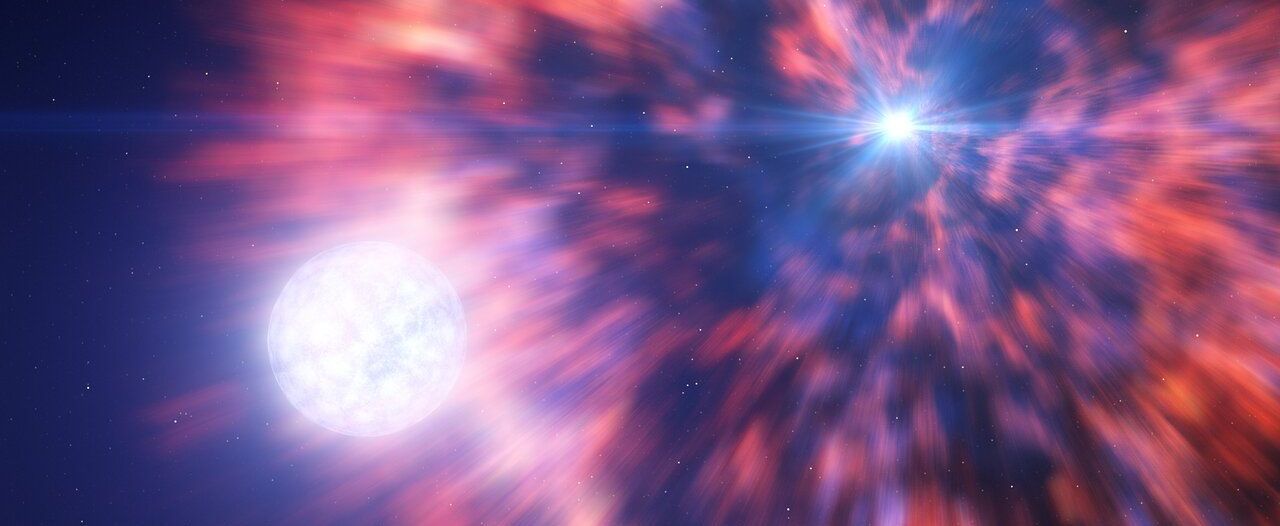ZTF News
Home / ZTF News
The aftermath of a supernova seen for the first time
Jan 10, 2024 | Press Release

Image caption: This artist’s impression is based on the aftermath of a supernova SN 2022jli explosion which occurred when a massive star died in a fiery explosion, leaving behind a compact object — a neutron star or a black hole. This dying star, however, had a companion which was able to survive this violent event. The periodic interactions between the compact object and its companion left periodic signals in the data, which revealed that the supernova explosion had indeed resulted in a compact object. Credit: ESO/L. Calçada
Astronomers have long theorized that when massive stars reach the end of their life they explode in a spectacular cosmic flash called Type II supernova. While many flavours of Type II supernova are now known, scientists predict that they will all end up producing the densest and most compact objects in the universe that we know of - neutron stars and black holes. Some clues have existed that this is the case. A team of astronomers from the ZTF partnership has seen in near real time direct evidence of this formation for the first time.
SN2022jli was discovered back in May 2022 by an amateur astronomer as well as ZTF and other astronomical surveys. While the brightness of most supernovae steadily declines after the supernova explosion, Ping Chen, a postdoctoral fellow at the Weizmann Institite of Science, Izrael noticed that SN2022jli had somewhat of a bumpy ride on its decline.
"The high cadence and signal-to-noise-ratio photometry from the ZTF survey enabled us to find the undulating behavior in the light curve at a relatively early phase, which triggered the follow-up observation campaign," says Chen.
It turned out that the brightness of the star was oscillating every 12.4 days. More powerful fascilities helped the team gather detailed photometric and spectroscopic information about the event. Using the data, the astronomers agreed that the most likely explanation is that they are seeing a cosmic binary - the supernovae, now a neutron star or black hole orbiting the companion star. As it does so, it zips through the hydrogen rich asmosphere of the companion and that acreeting process generates the pulsating brightness.
"With ZTF we managed to find the potential periodical signal early when the event is still live. This gave us the time to perform follow-up observations to confirm the discovery and to better characterize the phenomenon, which eventually lead to our confidence in what we are seeing," says Chen
Future telescope facilities such as the Vera Rubin and ESO's ELT should allow astronomers to investigate whether the compact object formed after SN2022jli is a neutron star or a black hole and further investigave the aftermath of these cosmic flashes.
More Information
"A 12.4 day periodicity in a close binary system after a supernova" is published in Nature on Jan 10
View ESO press release.
View University of Stockholm press release
Contact
Ping Chen
Postdoctoral Fellow
Weizmann Institute of Science, Israel
Email: chen.ping at weizmann.ac.il
Ivona Kostadinova
ZTF Program Coordinator
Caltech, USA
Email: ivonata at caltech.edu
